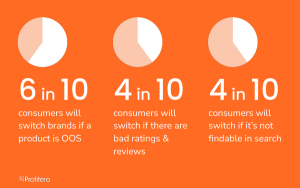
“Should we start a blog?”
I’ve heard this question many, many times. And my answer is uniform: “It depends…”
Behind the launch of just about every corporate blog is a laundry list of good intentions. Companies want to engage customers, “humanize” the brand, communicate more regularly, and drive conversions in an organic way.
But enthusiasm quickly deflates when marketers encounter the challenges posed to any good faith effort launched within a complex organization. That’s why you see bumpy spikes and drops in blog use among the Fortune 500.
These dead blogs, that sit without updates, that are packed with unmoderated spam in the comments section, are depressing to see. That’s why before you launch a blog you should beware of these four issues that doom corporate blogs before they even start. Think through these, and your blog is much more likely to succeed.
1. Complexity Shuts You Down
Let’s face it, this isn’t a personal blog. It’s not like the approval process is limited to agreement between your right and left brain. You work within an organization where you must maneuver among stakeholders, gather consensus, and adhere to specific standards.
Something as seemingly simple as updating a blog can be a huge project within a complex organization.
The key to managing your blog through this complexity is understanding and accounting for the various roles, tasks, and approvals ahead of time.
Before you start your blog, create specific workflows that outline the tasks and approvals that need to be completed to publish your posts, as well as any channels you plan to use for promotion. This provides a game plan all your stakeholders can easily see and participate in, ensuring complexity doesn’t shut you down.
2. You Run out of Patience
Maybe the blog was your idea. Maybe it was someone else’s. But when other priorities come into play, everyone’s attention is diverted and you’re left managing an empty blog queue.
Make sure stakeholders can see the results of your blogging initiatives.
The above workflows will help. But additionally, you need to make the entire process visible to your team so they’ll want to be involved. That requires not only regularly notifying colleagues of their deadlines and tasks, but also demonstrating the success of those efforts. If the posts are getting shares and page views, or if it’s influential in moving buyers from one stage of the pipeline to another, make sure stakeholders can see those results.
3. Ideas Get Stuck inside the Organization
Let me give you a tip that will save you aggravation in the long run:
You can’t just outsource your blog.
Sure, you can hire freelancers and curate content from around the industry. But your blog is ultimately about the issues that trouble your buyers, the reasons your service or product exist in the first place. No one understands these issues more than your people—be it the engineers, sales reps, fellow marketers, support team, etc.
Getting these ideas out of the people in your organization is another matter. Sometimes it feels like pulling teeth.
The best way to generate ideas from your people is to first meet with them and explain the vision behind your blog. Give them a reason to want to contribute their knowledge.
Next, provide a system where ideas can be submitted and approved from across your organization.
Finally, follow up on those ideas. There needs to be a structure and timeline for how an idea gets approved or feedback sent. Otherwise, the stream of ideas will dry up.
4. It’s Not Tied to Bigger to Initiatives
Your blog shouldn’t be just another channel.
Your blog should serve as a content hub for your department, team, or entire organization.
Think about it as a buyer-centric outpost. This is where content is served up in a way that it answers buyers’ questions and concerns. It’s not simply a place to slap up press releases.
Tie your blog to bigger marketing initiatives. If there’s a major demand generation campaign coming up, see how the theme can be tackled in a buyer-friendly way on your blog, ultimately pointing back to a lead generating conversion point. Got a new product launch? Think about what kind of problems that new feature or service solves, then address those on your blog so that it aligns with the product.
Blogs get lonely, and ultimately neglected, when they are not part of a bigger initiative. Find ways to make it a focal point of your future campaigns.
Digital & Social Articles on Business 2 Community
(319)
Report Post






